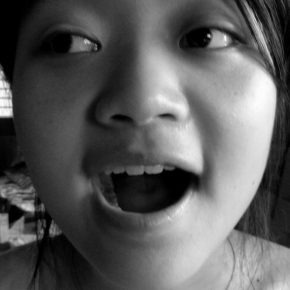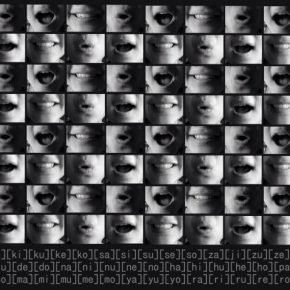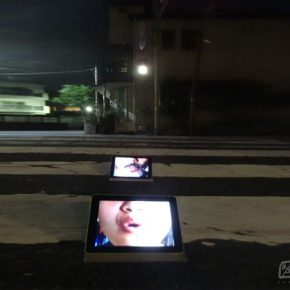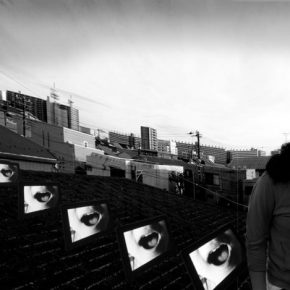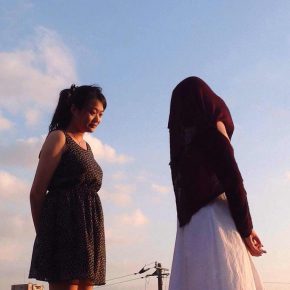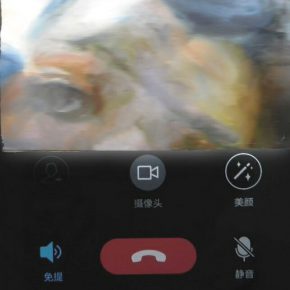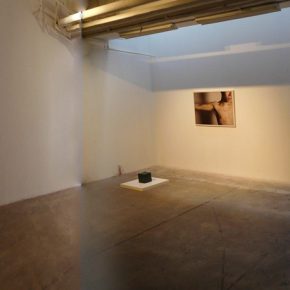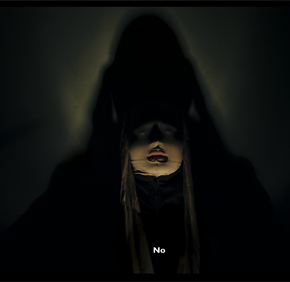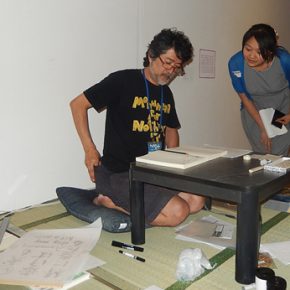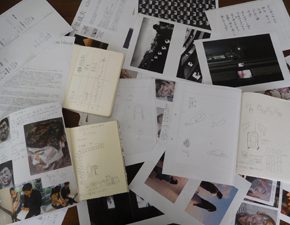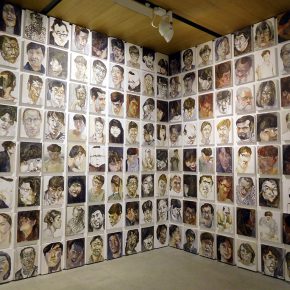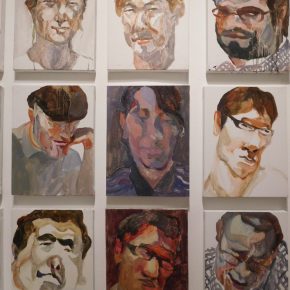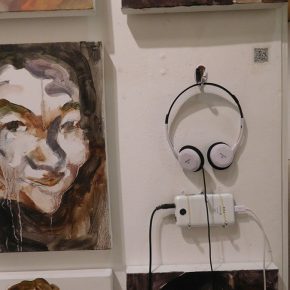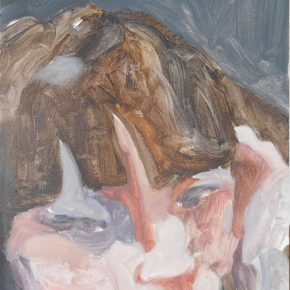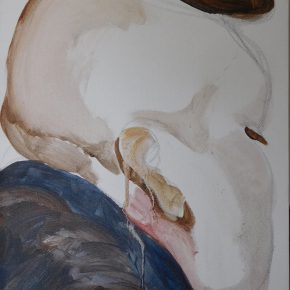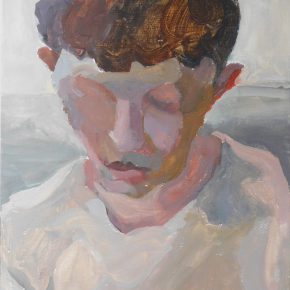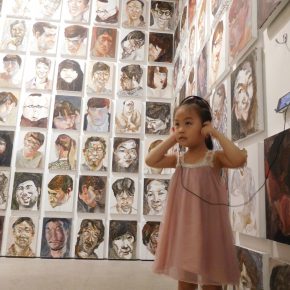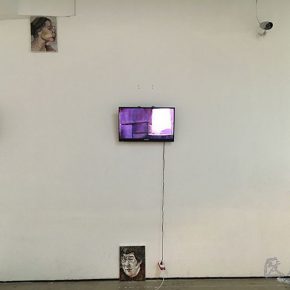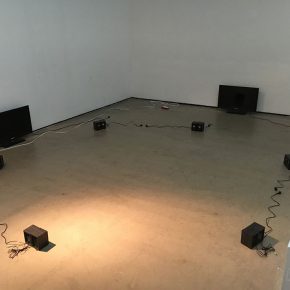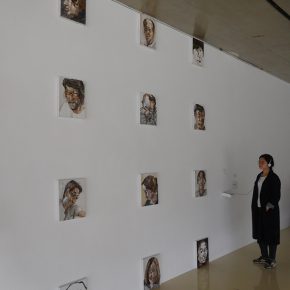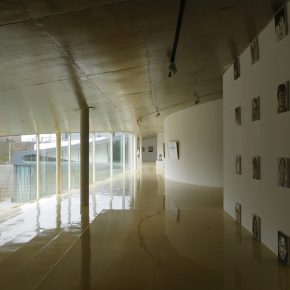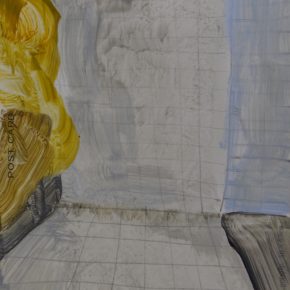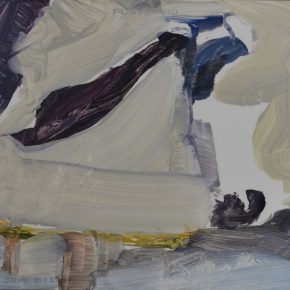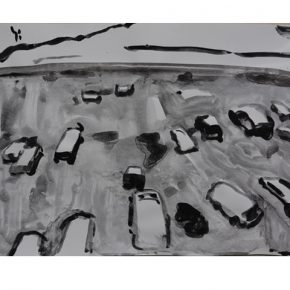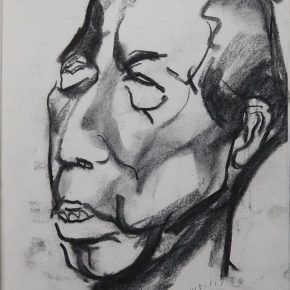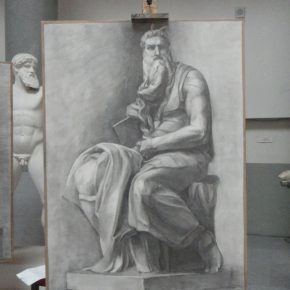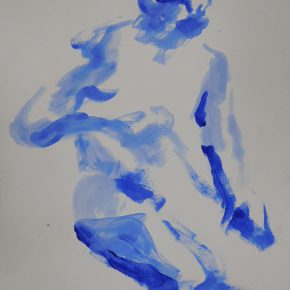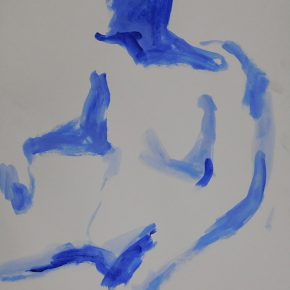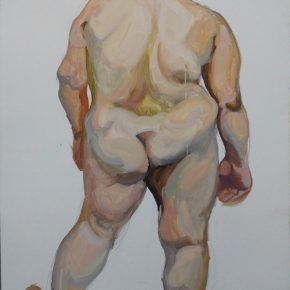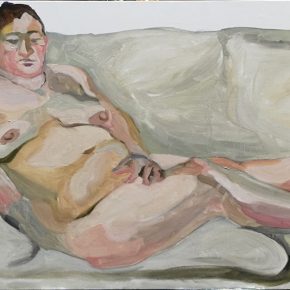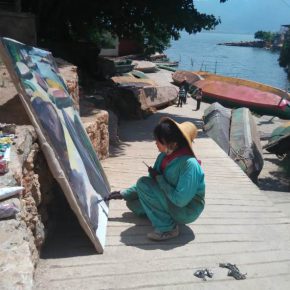
CAFA is an open and dynamic art institution, of active and frequent international exchanges, while the open, rigorous and innovative scholarship is also internationally renowned, attracting students from around the world to study art here, including Egami Etsu, who is an overseas student from Japan studying in the 3rd studio of the Department of Oil Painting. They are a special and conspicuous group on the campus of CAFA, how do they grow in CAFA?
Looking Forward to the Possibility of an Oriental Renaissance of Oil Painting“I have been focusing on the possibility of oriental oil painting”.
Throughout the development of world art history, especially for oil painting, Renaissance is undoubtedly one of the major parts. Renaissance was blooming in Italy from the 14th century to the 17th century, aimed at promoting the revival of the ancient Greek classics, rather than simply imitating and reproducing, it traced back the diverse Italian culture produced in the process of tracing back the classics, and from this emerged the three heroes of the Renaissance –Leonardo da Vinci, Michelangelo, Raphael. The revival of the foreign culture resulted in a richer and more unique cultural body, which is a very thought-provoking question.
Will the oil painting that was invented by the Western bloom in the Oriental culture be a kind of “Renaissance”? Do Oriental people simply imitate an expressive way when they learn oil painting? Or through tracing back the developing history of Western oil painting do they create a new “Oriental oil painting”? Is there a heritage and development of the new context of oil painting? Only clearly understanding it, can one learn the similarities and differences between the Orient and the West, and excavating deeper possibilities of the Orient. In Oriental countries, including China, Japan and South Korea, more and more oil creators are emerging, proving that oil paintings have roots in Oriental countries, exploring the possibility of fitting with the cultural context. What is Oriental oil painting in the end, and will it be related to the establishment and re-recognition of the Oriental aesthetic culture? Contemporary oil painting is featured in China, how do oil painting and tradition, oil painting and contemporary conflict, fuse and sublimate? These are the reasons why I come to China to study oil painting.
Going Back and Forth between Acoustic Waves and Optical Waves: Studies on “Language” and “Communication”
Like most of the overseas students, I am sensitive to language, and also distressed at it. I was born in Japan, and then followed my parents in going to Europe, now I arrive back in China, repeatedly encountering the distress of language barriers, although I can speak Japanese, English, Chinese, but I still often find that, “it is only to be sensed not explained”. I began to question the possibility of language, at the same time I am interested in the birth and developing history of language. I have read the book of “Language which originated from Song” by Prof. Okanotani from The University of Tokyo, which greatly inspires me, the origin of language is “sound”.
An accidental “mishearing” made me find the starting point of creation, and I began a trial of the use of different language to convey information from the perspective of phonetics, and started doing a lot of investigation with the support of friends. The use of language aims at communicating, and this investigation is not only in order to explore the language communication, but also a real experience to communicate with participants, their voices and appearances are elements to communicate with souls, this information was conveyed to me and stored in my memory, and then I used the language of painting to record this. In the process, I found the “language” was both a tool and barrier to convey information. As an human instinct, there should be a general concept of language, but with the development and dislocation of civilization and culture, it gradually formed different languages, and created gaps, so that the feature of language was changed to become a barrier from communication. I observed them when we communicated, heard their sounds, hoping to find the relationship between various styles of information communication. Sounds and images are transmitted to the brain in the form of a wave, so I formed the impression of them in the conversation, and then depending on feelings drew on the first impression, drawing a variety of drafts until I finally found my feelings of friends, which is the reason why I name my graduation creation “Going Back and Forth between Acoustic Waves and Optical Waves”.
In the investigation, experimentation and communication, I found communication didn’t only include language, but also contained communication by the actual contact and eyes, for example, appearances and manners of the participants in the creative testing voice game also conveys a lot of information to me, and these portraits have become the window of spiritual communication and basic elements of information transferance, the human actually has the largest exchange elements. “Going Back and Forth between Acoustic Waves and Optical Waves” is my true state of the entire communication process, including both surprise and confusion, and the communicating channel is alternated by space and time, sound and image interweaving, to form an all-round exchange network that is not limited by language. The nodes of this network are human, the true humans and also the perceived humans, at the same time they are codes for the network, the basic genes of communication, and result in the portraits of the exhibition.
The experience of studying abroad inspires me to unravel the mystery of exchange from the origin of language, and I have always received all information of language, appearance and manners of the participants during the creation and investigation, should I believe what I hear or what I see? I simultaneously record both the voices and images, going back and forth between acoustic waves and optical waves, hoping to find the necessary connection between them.
Text and photo by Egami Etsu
Edited by Zhang Wenzhi, translated by Chen Peihua and edited by Sue/CAFA ART INFO


